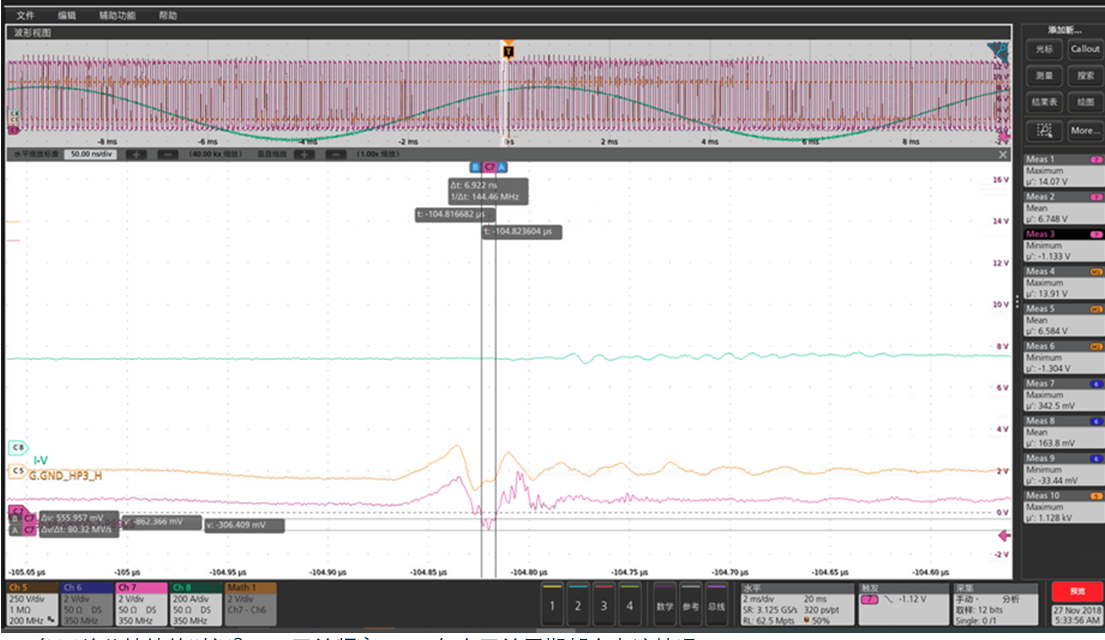Other Parts Discussed in Thread: LM2903, LM339, LM2903B-Q1, LM2903B
Hi team,
My customer is using LM2903-Q1 in their traction inverter system. During the inverter switching there will be noise coupling to the input pin, making the input exceed the negative -0.3V spec. Please see below a screenshot that is happening every cycle (20k frequency), could you help us analyze the risk? Thank you
In below waveform, C7 in pink is the Input at LM2903 pinout. The duration of below -0.3V is around 7ns, the minimum input voltage is -0.86V.

Thank you
Scarlett

